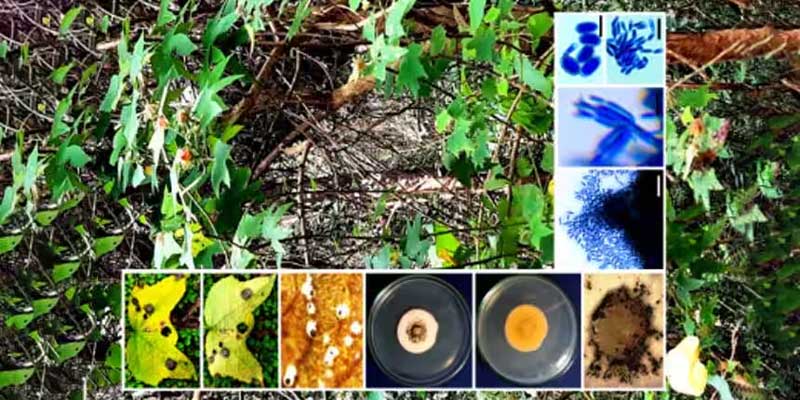

In a significant contribution to fungal taxonomy and plant pathology, scientists from the Kerala Forest Research Institute (KFRI), Banaras Hindu University (BHU), and the Botanical Survey of India (BSI) have discovered a new species of phytopathogenic fungus from the Peechi-Vazhani Wildlife Sanctuary in Kerala.
The fungus, named Paramyrothecium indicum (Ascomycota, Stachybotryaceae), was found infecting wild hibiscus plants and is associated with leaf spot symptoms. This species derives its name from the country of its origin, India, and contributes to the limited but growing list of recognised species within the Paramyrothecium genus, which currently comprises only 21 globally accepted taxa, as catalogued by Index Fungorum.
The discovery was made through a collaborative effort involving Shambhu Kumar, senior scientist and head of the Forest Pathology Department at KFRI; Mufeeda K.T., a Junior Research Fellow at KFRI; S. Mahadevakumar, scientist at BSI (Andaman and Nicobar Islands); and Raghvendra Singh, senior assistant professor at BHU, Varanasi. Their findings, grounded in detailed morpho-cultural characterisation and robust multigene molecular phylogenetic analysis, have been published in the internationally reputed journal Persoonia (Netherlands), highlighting the scientific significance and novelty of the species.
Paramyrothecium indicum is classified as a phytopathogenic parasitic fungus that derives nutrients from its host plant, causing visible disease symptoms, such as leaf spots. According to the National Centre for Biotechnology Information (NCBI), phytopathogenic fungi like this can have serious consequences for plant health and crop productivity. In the case of P. indicum, leaf spots rapidly spread under conducive climatic conditions, particularly in tropical and humid environments, such as those found in Kerala’s Western Ghats.
The scientists have emphasised that the fungal infection can engulf all foliage within a short time once the environmental conditions become favourable, thereby posing a threat to local plant diversity. The team also noted that the ecological conditions of the Western Ghats, marked by rich biodiversity, consistent rainfall, and diverse phanerogamic vegetation, make it an ideal hotspot for both pathogenic and non-pathogenic fungal growth. This discovery, therefore, not only expands the known fungal flora of the region but also highlights the importance of continuous mycological surveillance and ecosystem-based research in monitoring emerging phytopathogens.
The scientists advocate for early detection and removal of infected leaves as the primary management strategy. Biological solutions currently available in the market may serve as preventative measures. At the same time, fungicides remain effective in managing advanced infections caused by Paramyrothecium species.
Notably, some species within the Paramyrothecium genus have been discovered to produce secondary metabolites with bioherbicidal properties, suggesting potential applications in sustainable weed management. However, the researchers caution that the bioactive properties of P. indicum remain to be explored, and further studies will be necessary to determine the toxins it secretes, its epidemiological patterns, and potential impacts on native flora or crops. According to Shambhu Kumar, a detailed investigation into its lifecycle, environmental interactions, and control strategies will follow this initial taxonomic description.
This discovery not only enriches the global database of fungal biodiversity but also serves as a reminder of the intricate ecological relationships present within tropical ecosystems. It highlights the critical need to preserve biodiversity hotspots, such as the Western Ghats, while fostering interdisciplinary research that bridges the fields of taxonomy, pathology, and environmental sciences.
Published on: Monday, January 15, 2024